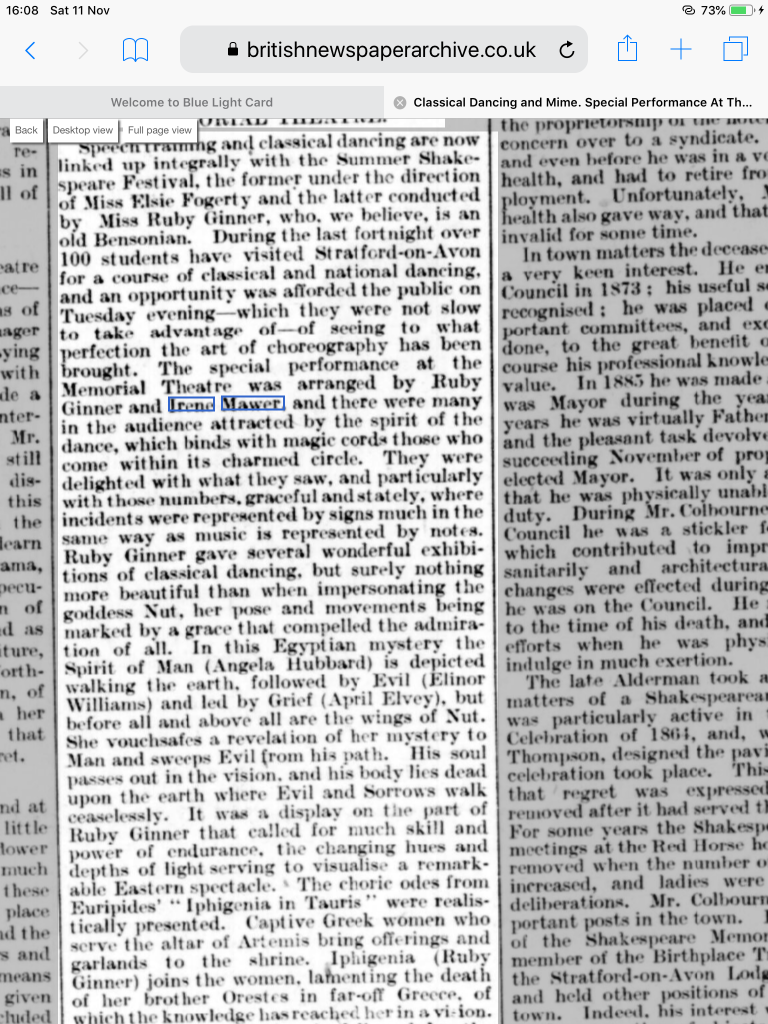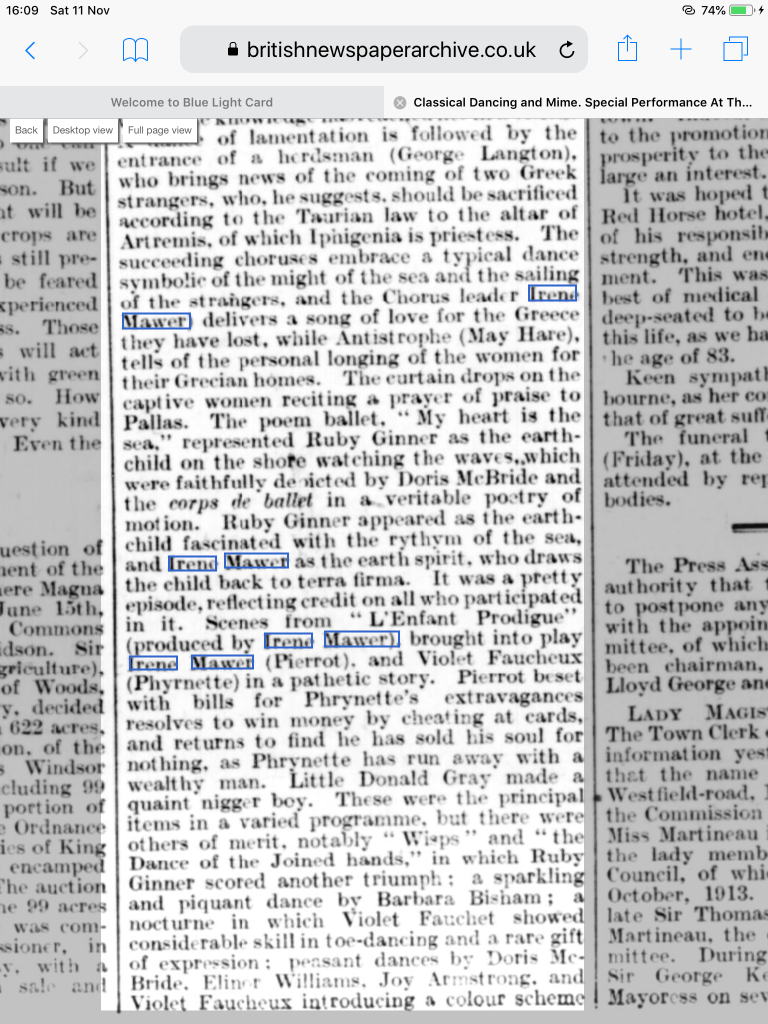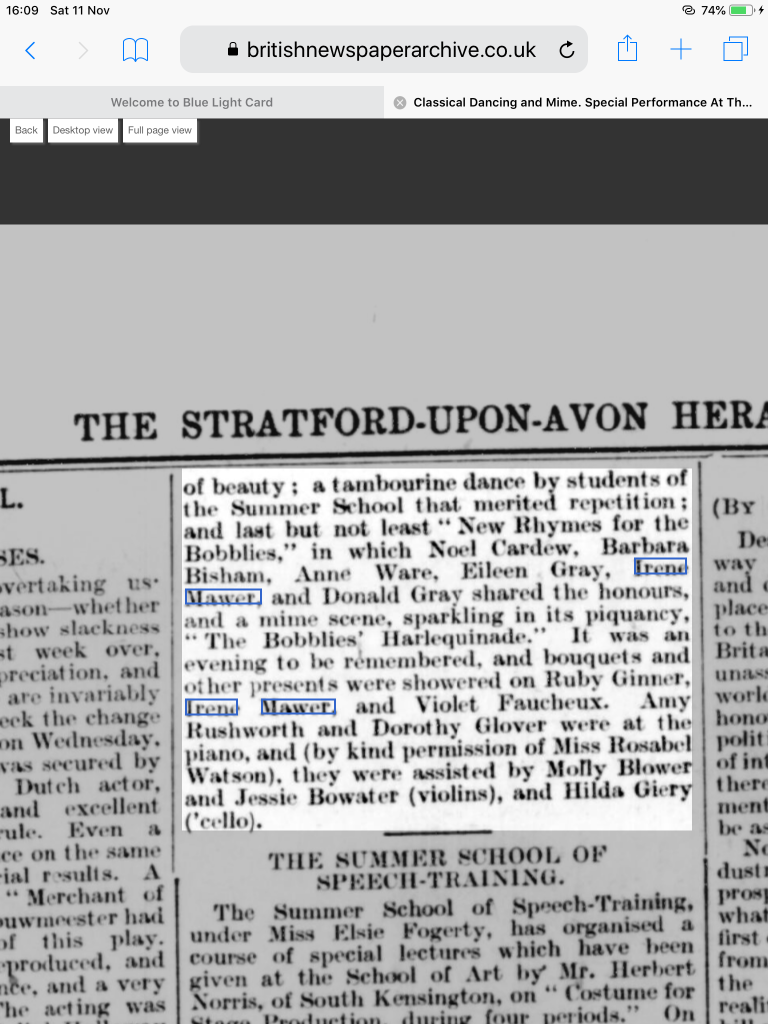Memorial Theatre
Stratford-upon-Avon Herald, August (1937 ?)
In a previous post, I wondered where the connection was between a Ginner-Mawer performance and Shakespeare. In this newspaper article, the item begins “Speech training and classical dancing are now linked up integrally with the summer Shakespeare Festival…”
And the cause of the link? Mawer and Ginner’s revered teacher: Elsie Fogerty, and Ginner’s occasional employer Benson. Fogerty and Benson were bringing the arts together under the umbrella of Shakespeare. I don’t really see that there was necessarily a connection – apart from the fact that using the six degrees of separation theory applied to the arts, you can make links.
The Ginner-Mawer School usually performed at the Memorial Theatre in Stratford during these summer festivals, which were combined with the Ginner-Mawer’s own Summer School curriculum.
There is a rather charmingly worded interpretation of dance: “incidents were represented by signs much in the same way as music is represented by notes.” Lovely.
Choric scenes from Iphigenia in Tauris by Euripides featured a MAN! He is George Langton and he is playing the part of a herdsman. Now, who is George Langton? Was he an actual Ginner-Mawer? There were so few men, and those that there were rarely receive a name-check. I haven’t yet been able to trace him, but hopefully one day I will find out the answer.
Iphigenia in Tauris featured odes, so they would have been vocalised, and both Mawer and Ginner featured in the performance. Ginner was one of the women lamenting the death of her brother, while was leader of the Chorus. The Chorus also danced, so although Mawer was never a dancer, I think she was proficient enough to take part in scenes such as this. In this case, the dance symbolised the might of the sea and the sailing of strangers. Mawer “delivers a song of love for the Greece they have lost”, so I don’t know if this meant she literally sang. She was an expert on voice, but I haven’t seen other references to her singing.
Mawer and Ginner also performed in what is described as the poem ballet My Heart is the Sea, with Mawer representing the earth spirit, who draws the human child back to terra firma. The visual was undoubtedly very beautiful, with Doris McBride leading the corps de ballet faithfully depicting the waves of the sea in a “veritable poetry of motion” which I can imagine.
Mawer again played Pierrot in scenes from L’Enfant Prodigue. And Lo and Behold! – SECOND MAN is named, “Little Donald Gray, who presumably is simply Donald Gray and I take to be a child, rather than a youth or a man.
Another nudge to males, also probably children as they are connected with the Bobblies: Noel Cardew, Donald Gray (but not necessarily children).
Members of the cast included Angela Hubbard; Elinor Williams; April Elvey; May Hare; Violet Faucheux; Barbara Bisham; Elinor Williams; Anne Ware; Eileen Gray and Joy Armstrong.
Music was provided by Dorothy Glover and Amy Rushworth at the piano, and (by kind permission of Miss Rosabel Watson) were assisted by Molly Blower and Jessie Bowater (violins) and Hilda Giery (‘cello).




